Pentax Film Camera Bodies
|
This is an historical document describing the Pentax film cameras I used before going digital in 2002. Since that time I've used a series of Canon digital single lens reflex (SLR) cameras starting with the D60, followed by a Canon 1Ds, 10D, 20D, 5D and 50D, not to mention a Canon G2 digital point and shoot camera for underwater work (since replaced by the 5D). In the beginning it seemed like I was constantly buying new cameras, but thankfully the technology has matured enough now (2010) to make the need for updates less compelling. All of these photos on this page were taken with a cheap digital camera, so you'll have to forgive the lousy focus! The ZX-M at top right of this photo doesn't have a built-in flash, the ZX-5 at top left has a built-in flash, and the Z-1 has a built-in flash and low-light auto-focus assist light. |
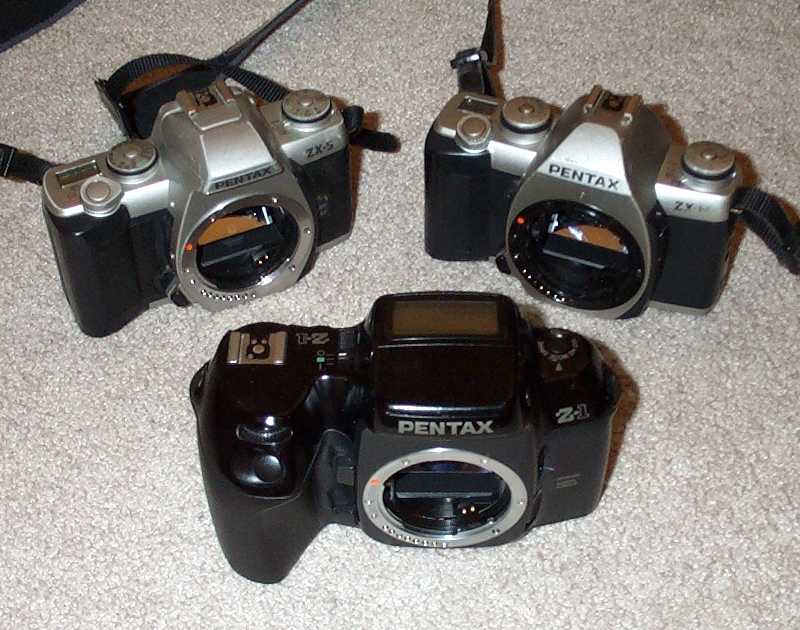 |
|
The LCD of the Z-1 is much larger than the minimal ZX-M and ZX-5 displays, all the better to display the additional data associated with the Z-1's additional complexity. |
 |
|
The hot-shoe of the Z-1 is on the right, away from the center line of the lens. The most common convention with sunlight is to have it coming from the left, but having the flash on the right makes sense when composing vertical shots - light coming from below looks just plain wrong! You can see how large the right-hand grip is on the Z-1 compared to the ZX-M and ZX-5, which are nearly identical. As well as being bulkier, the Z-1 is also considerably heavier, presumably because of its solid metal construction. |
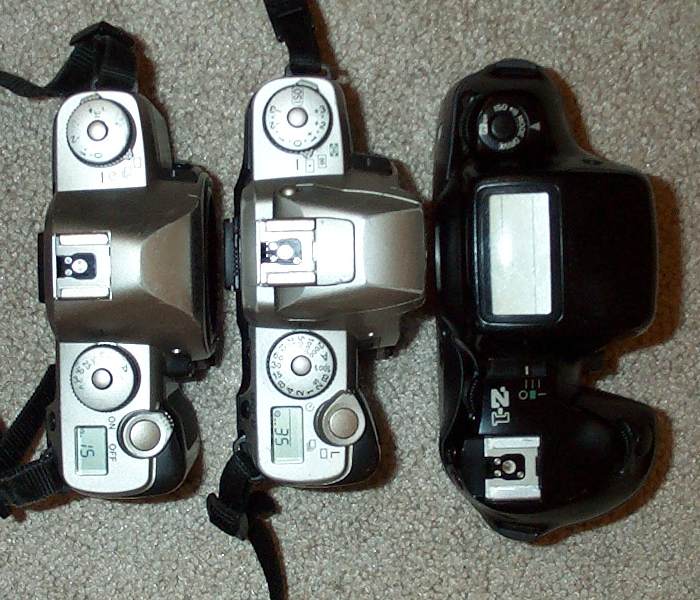 |
|
The ZX-M is very cheap, and as you can see, the numbers and letters soon wore off the dials, in much less than a year after I bought it. I do, however, torture my camera equipment, so you might have better luck than me. The ZX-M displays its shutter speed and exposure compensation settings in the viewfinder display, so the camera's still useable. The obtrusive on/off switch is a bad design - when the camera's switched on the knob is in the way, and it's easy to accidentally switch it off. |
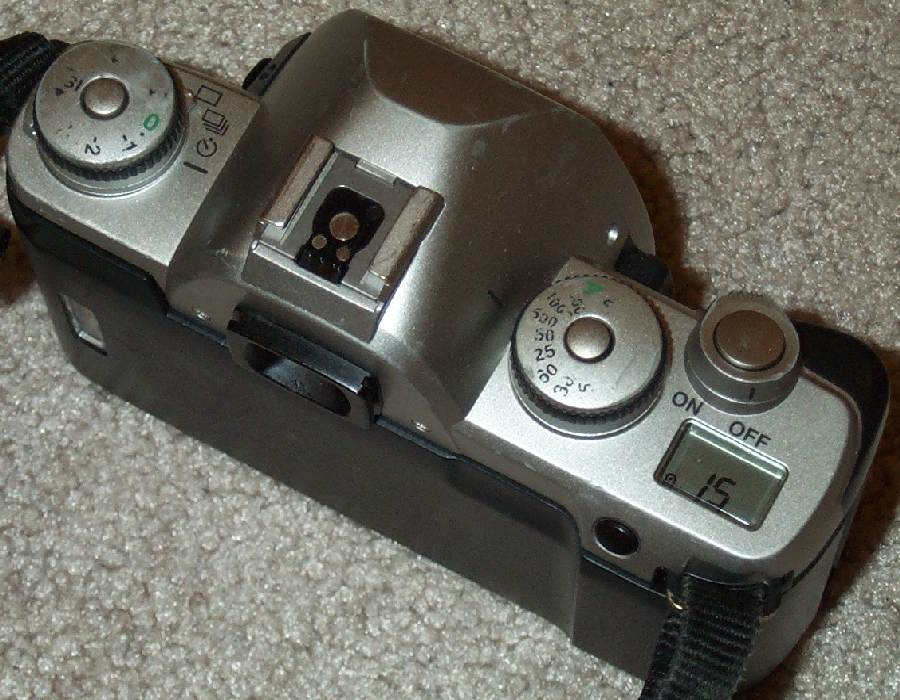 |
|
Even after 5 years, all of the numbering and lettering on my ZX-5 is in good condition. The controls are very similar to the ZX-M, but the left-hand dial of the ZX-5 has metering options - spot, center-weighted and matrix, while the shooting modes - single, multiple and timer, are on the right hand dial. |
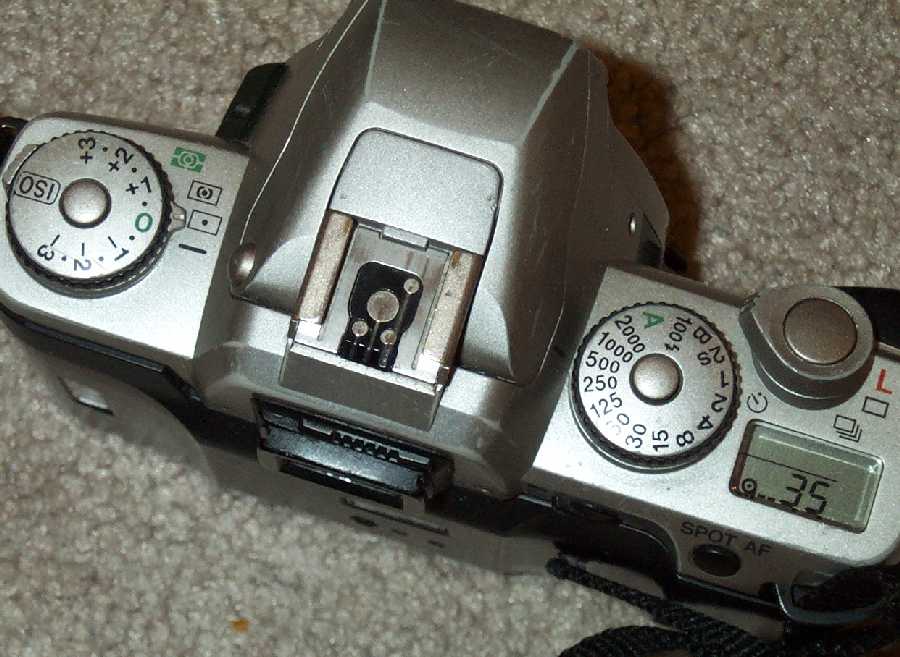 |
|
The controls on the Z-1 are utterly different from the other two cameras. When "mode" is selected, as shown here, and the central button just below mode is depressed, manual, hyper-manual and various flavors of automatic operation can be selected. The "drive" option selects single shot, multiple shot, bracketing and several timer options. "ISO" allows manual entry of the film speed and "PF" allows setting of any of 18 different Pentax Functions, which are listed below. |
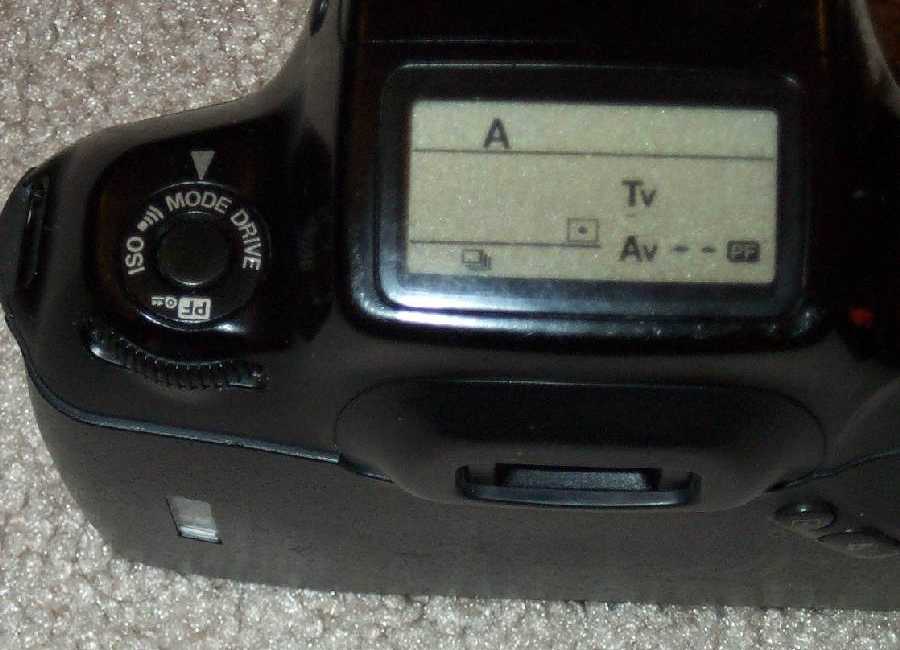 |
|
Here's the right-hand side of the camera. The dial below "Z-1" is primarily for setting the aperture of the lens - on the ZX models, this is done using the aperture dial on the lens itself, which you can also do on the Z-1. The switch immediately to the right of the Z-1's LCD is the on/off switch; I assume that the middle green setting is to put the camera into a fully automatic "point and shoot" mode. |
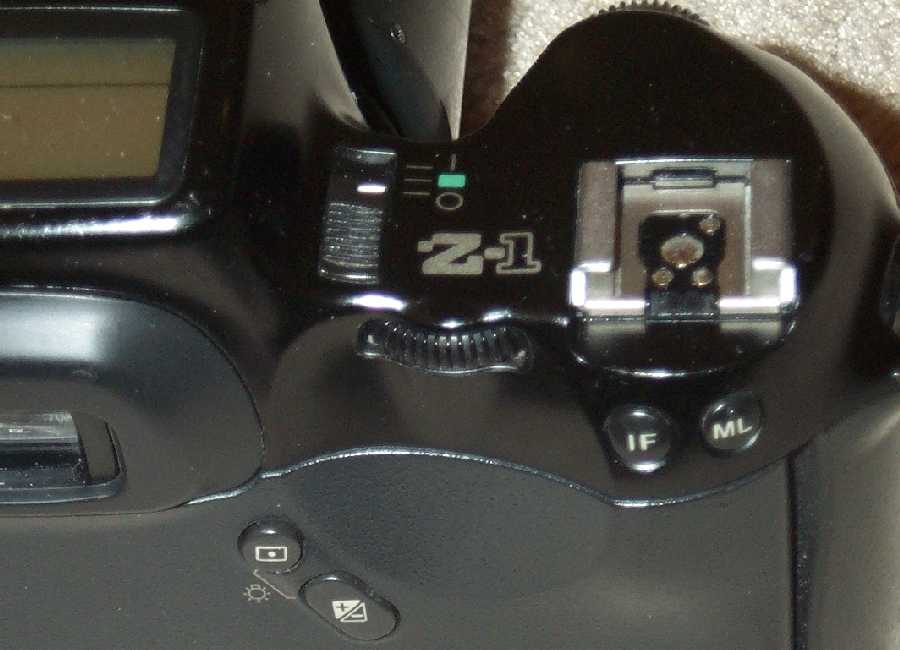 |
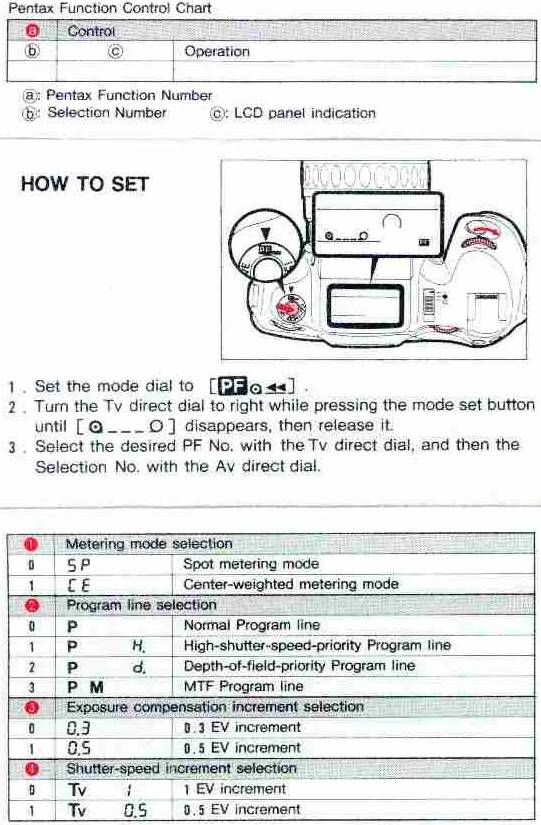 |
If you didn't have a manual, it would take an awful lot of playing around to figure out how to get the camera into a mode where you can set the different programmable "Pentax functions". |
|
And if you did get it into this mode, it would be almost impossible to figure out what each of the functions is, and what the settings for each function do. This illustrates nicely the difference between the Z-1 and the ZX-5 and ZX-M, both of which can be operated by any photographer, with or without a manual. Of course, there might well be settings in this table that you really want and can't get from the ZX-M and ZX-5, in which case the Z-1 is definitely your kind of camera! |
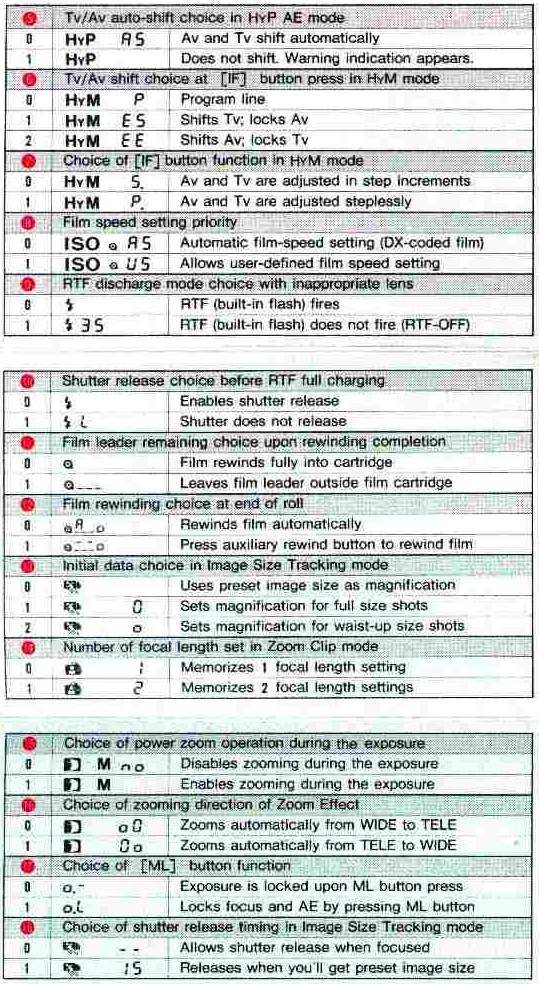 |